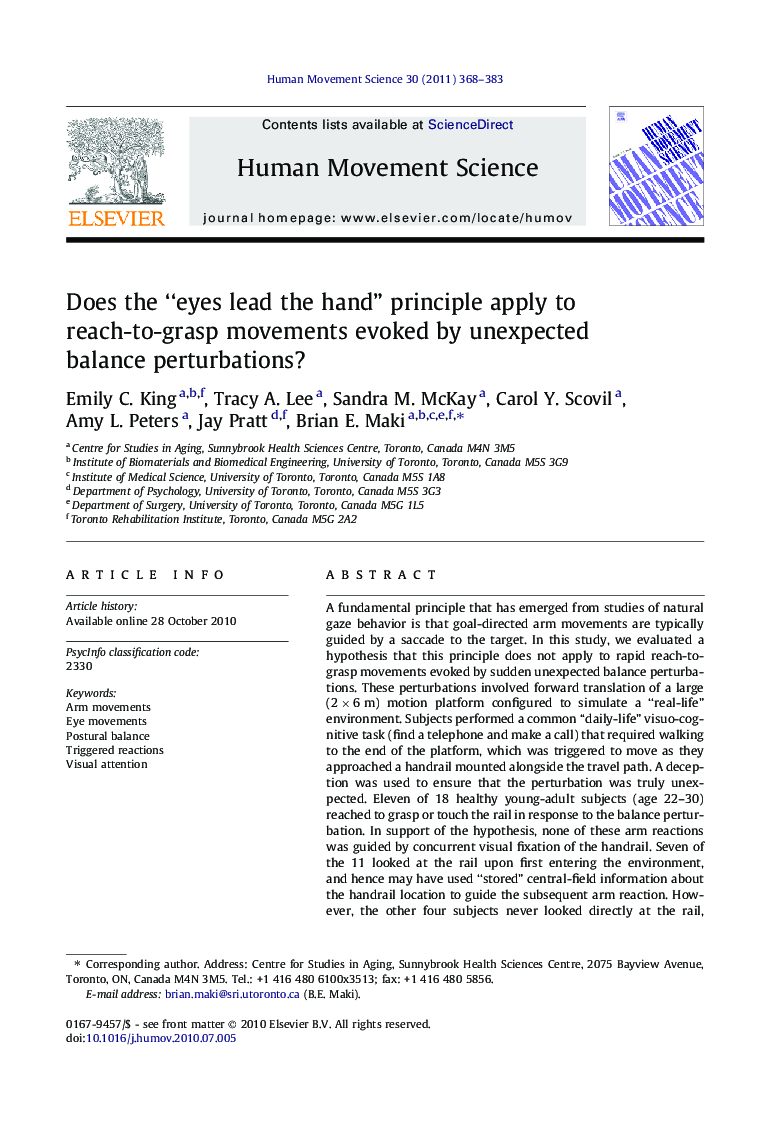| Article ID | Journal | Published Year | Pages | File Type |
|---|---|---|---|---|
| 928661 | Human Movement Science | 2011 | 16 Pages |
A fundamental principle that has emerged from studies of natural gaze behavior is that goal-directed arm movements are typically guided by a saccade to the target. In this study, we evaluated a hypothesis that this principle does not apply to rapid reach-to-grasp movements evoked by sudden unexpected balance perturbations. These perturbations involved forward translation of a large (2 × 6 m) motion platform configured to simulate a “real-life” environment. Subjects performed a common “daily-life” visuo-cognitive task (find a telephone and make a call) that required walking to the end of the platform, which was triggered to move as they approached a handrail mounted alongside the travel path. A deception was used to ensure that the perturbation was truly unexpected. Eleven of 18 healthy young-adult subjects (age 22–30) reached to grasp or touch the rail in response to the balance perturbation. In support of the hypothesis, none of these arm reactions was guided by concurrent visual fixation of the handrail. Seven of the 11 looked at the rail upon first entering the environment, and hence may have used “stored” central-field information about the handrail location to guide the subsequent arm reaction. However, the other four subjects never looked directly at the rail, indicating a complete reliance on peripheral vision. These findings add to previous evidence of distinctions in the CNS control of volitional and perturbation-evoked arm movements. Future studies will determine whether similar visuo-motor behavior occurs when the available handhold is smaller or when subjects are not engaged in a concurrent visuo-cognitive task.
